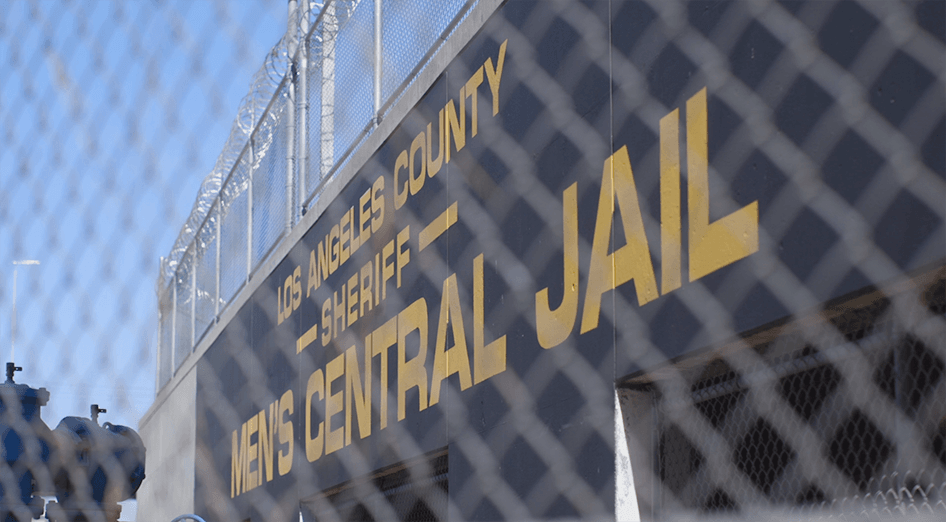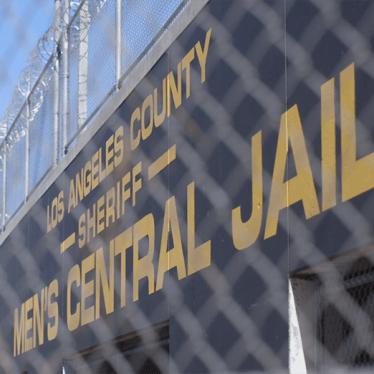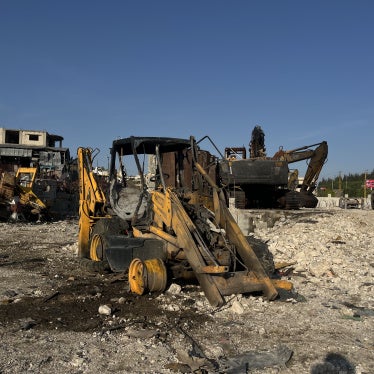In 2016, Sarah Jackson and Daria Morrison were arrested in Los Angeles and charged with participating in a series of robberies. The judge ordered that they both remain incarcerated while their case was being decided unless they paid $150,000 bail. Testimony in Daria’s preliminary hearing would later reveal that neither robbed anyone, though they were both passengers in a car with the person that did.
Sarah and Daria, whose names have been changed to protect their privacy, were 20-year-old black women with little money and no criminal record. Sarah cared for her young son by herself. Daria was a college student, with a waitressing job, who helped her unemployed mother pay bills. She hoped one day to go to law school.
Sarah was unable to pay bail. When the prosecutor, who had successfully argued at the bail hearing that she was too dangerous to release without bond, offered her “time served”—release from jail—in exchange for a guilty plea, she quickly agreed. Conditions in jail were miserable: poor sanitation, bad food, and little chance for recreation or fresh air. Most importantly for Sarah, she was separated from her small child. She accepted the conviction for two felony counts of robbery, each a “strike” under California’s harsh “three strikes” law; five years of probation; and a seven-year suspended sentence. Any violation of the rules of her probation, including missing an appointment with her probation officer, would send her to prison.
Daria’s father found a bail bondsman who offered her low up-front and monthly payments to cover a 6 percent fee for a bail bond, discounted from the usual 10 percent. She was released and gained the benefits of contesting her charges from outside of jail. She could comfortably meet with her lawyer, wear her own clothes to court, and get back to work and school. Most of all, without the pressure of being in jail, she could take her time to prepare her defense properly, including litigating the preliminary hearing, which revealed her limited role in the robberies. Eventually, her charges were reduced to much less serious ones. She got no additional jail time, and if she completes her probation and community service, she can have the case dismissed altogether. She still makes payments to the bondsman, but she’s grateful for the future ahead of her. Daria was able to fight her case successfully because she was out of custody. She said she felt the judge was “looking at her differently,” because she was “not looking like a criminal like everybody else.”
The obvious unfairness of this system has led to calls for reform in California and across the country. On August 28, California Governor Jerry Brown signed SB10, a bill that he touted as bail reform: “Today, California reforms its bail system so that rich and poor alike are treated fairly.”
The basis of that claim is that the bill ends money bail and puts the bail-bond industry out of business. Unfortunately, the system replacing cash bail will not treat people fairly either and may result in even more Californians’ suffering, like Sarah and Daria, the harmful effects of pretrial incarceration.
The new law will no longer allow people to pay a dollar amount to secure release from jail while resolving their cases. Instead, algorithms, developed by private companies, will generate a score for each person estimating their likelihood of rearrest or missing a future court date. That score will be classified as either high, medium, or low risk. “Low-risk” people will presumably be released, but judges have unlimited authority to override the risk-assessment recommendation and order incarceration. “Medium-risk” people may be released or jailed depending on rules created by local jurisdictions. “High-risk” people, with rare exceptions, will be jailed.
These tools have multiple problems. They make decisions based not on an individual’s circumstances and the context of their cases, but by comparing certain facts about the individual like age and number of criminal convictions to others with similar profiles and assigning scores based on whether those others have been rearrested or missed court in the past. Often, the factors the tools consider are secret and proprietary to the designing company, making it impossible to understand how the algorithm arrived at a score and, therefore, difficult to challenge in court.
In Sarah and Daria’s case, if a risk-assessment tool were used instead of money bail, the most commonly used tool would score their youth and the seriousness of the charges heavily against them, without considering the details of their case or the circumstances of their lives, including work, schooling, and the impact of incarceration on their families. They both would almost certainly be labeled high risk and remain incarcerated.
Because the tools estimate risk of rearrest, they are largely predicting police behavior, as police patrol more aggressively in neighborhoods where poor people and people of color live, making more stops, searches, and arrests there than in wealthy and white neighborhoods. A study of one commonly used tool found that it wrongly classified black people as high risk at nearly twice the rate of white people, while wrongly classifying white people as low risk at a much higher rate than for black people. This bias, inherent in the tools, undermines SB10’s supporters’ claim that rich and poor will be treated equally. Additionally, the scope of each risk category (high, medium, low) is not derived scientifically, but is entirely discretionary. The judges who control the scoring can adjust the size of each category to jail as many or as few people as they want.
Jail, under the new law, means jail with no option of release. Under the existing system, a poor person like Daria was able to borrow money and make payments to a bondsman to get out without having to take an overly harsh guilty plea or leave her mother without support. While unfair to those unable to raise the money, and often a crushing financial burden for those that do, money bail allowed her to get free. Under the new law, that option will not exist. People ordered detained will stay in jail at least until their case is resolved.
Judges can order this “preventive detention,” as it is called, if they decide “there is substantial reason to believe that no nonmonetary condition or combination of conditions of pretrial release will reasonably assure protection of the public or victim, or the appearance of the defendant in court as required.” This vague statement is not accompanied by any guidance or bound by any limits on judicial discretion. Judges simply have to say they have this belief to order incarceration with no chance for release.
In the California bail case, In re Humphrey, the Court of Appeals condemned judges for unlawfully setting money bail so high that it functioned as a form of preventive detention. The new law will empower judges to simply order that same preventive detention without needing to set money bail.
The new law does not constrain the judges with any meaningful procedural requirements. It does not define standards for the hearings in which judges decide to jail people without option for release. There will be no right to cross-examine witnesses, no requirement to produce reliable evidence at these hearings. Hearsay is admissible. The new law allows judges to take away a person’s liberty without due process.
Legislative proponents of the new law have said that we should trust the judges—that the new system, without bail as an option, will make judges more likely to use the tools in a way that ends up putting fewer people put into categories triggering detention. Unfortunately, California judges have a track record of expanding pretrial incarceration. Over 60 percent of people in California jails are pretrial detainees. Nearly every one of them had bail set by a judge.
People in custody, like Sarah, plead guilty faster than those out of custody, often with much worse results. Judges and courts have an institutional interest in processing cases quickly to avoid clogged dockets. Of course, many judges do not allow such considerations to govern their behavior on the bench, but it is reasonable, given past performance, to expect that many others will. This may well result in increased incarceration—the opposite of what the criminal-justice-reform movement hoped to achieve.
Supporters of the new law argue that it is a major step toward bail reform because it removes the bail-bond industry. But the bail-bond industry is not the root cause of the problem of pretrial incarceration. They profit from the system, but judges are still the ones setting bail.
The original version of SB10, introduced in April 2017, was the product of input and hard work from a range of organizations devoted to criminal-justice reform. It would have caused the demise of the bail industry, while limiting the number of guilty pleas derived from the pressures of pretrial incarceration. It would have required release, including release with conditions to ensure return to court and public safety, for most people accused of misdemeanors and lower-level felonies. The new law does require initial release for people arrested for misdemeanors, but there are broad exceptions to that rule, and it does nothing to prevent police from over-charging to get around the release rules. Unlike the new law, the original SB 10 recognized the danger of racial and class bias in the operation of the risk-assessment tools. The law initially limited their use and attempted to set up some oversight, like requiring audits that examined for racial and class bias. While this was still inadequate to address the inherent problems of the algorithms, it did provide some avenue to mitigate harms.
Then, on August 16, 2018, the authors of SB 10—Senator Robert Hertzberg and Assembly Member Rob Bonta—released a completely rewritten version that gave judges nearly unlimited power to incarcerate and required the use of risk-assessment tools. The new language directly tracked a proposal for bail reform presented by a committee of judges in October 2017. The authors of the bill disregarded the concerns of SB10’s grassroots supporters and simply accepted the judges’ wish list for enhanced powers.
Once the new language was released, opposition to SB 10 formed, including many of the groups that had sponsored or supported the original version. But the bill’s authors pushed the legislation through without allowing time for public scrutiny. The Assembly narrowly passed it on August 20. The Senate voted the next day, and Governor Brown quickly signed it.
California’s new law is a major setback for the criminal-justice-reform movement. Despite the claims of its authors, the new law will continue and could even increase pretrial incarceration, which has disproportionately harmed poor people and people of color.
Supporters of reform in other states should not be fooled by the sound bites about “ending money bail.” They should understand why organizations from the communities that are most directly harmed by the existing system have come out so strongly against the law. They should understand that in all likelihood the law will make the system even less fair for people like Sarah or Daria.








